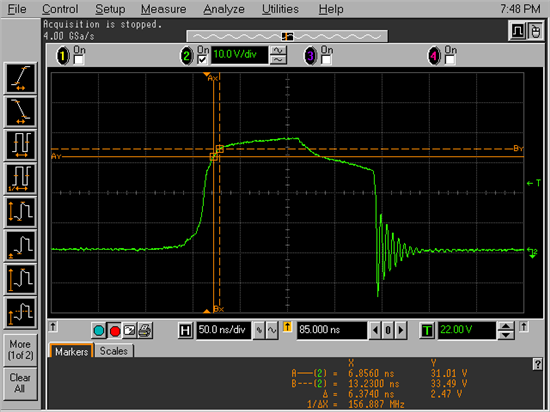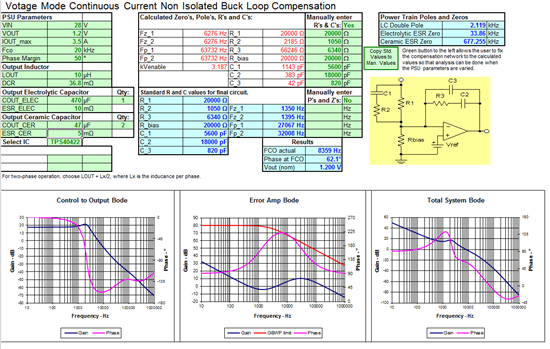I have a design based on the TPS40170. It is a 24V to 28V input design with a UVLO voltage of 16V and output of 1.2V at 3A. I'm finding that the supply is unable to start unless the input voltage is around 30V or higher. I've measure the SW node and am attaching some screenshots to show the results.
"when I crank up the input voltage above ~30V"
As you can see, the rising edge is pretty good with no ringing, but the falling edge (HS-FET turning off) shows considerable ringing. This seems a bit odd, but this is the case. I believe that what is happening is that the noise from the ringing is causing the controller to sense an OCP or SCP fault and then turning off the supply. It continues to 'hiccup' until the input voltage is high enough, at which point the rail comes up as shown above.
I have several instances of the same PCB (new prototypes) and have observed some variability in when the supply comes up, but in all cases the overall behavior is the same. Increasing the ILIM resistor can allow the supply to work, but the amount that Rilim needs to be increased varies from board to board. Moreover, I don't want to hike up the current limit to a high value just to get things to work.
Please note that I also have three other supplies, 3.3V, 5V, and 12V that use the same controller and topology. They all use the same FETs and have very similar layouts and derive from the nominal 28V Input. In the case of these three supplies I see the same undershoot when 28V is applied to the board, but shortly after initial application of power the undershoot and ringing goes away and the SW waveform looks fine. Please see the sequence of 3V3 screen shots.
3v3 startup pulse " perhaps during softstart"
still 3V3 startup
3V3 after startup, Note that there is no undershoot
The same phenomenon is observed on 5V and 12 V as well as 3V3
Also , we observed that the ringing frequency is common to all supplies (approx 150MHz)
I don't fully understand why this occurs only while the supplies are starting up. Please enlighten me. I understand that the layout may need to be examined and changed, but I'd like to get these boards working so as not to stall other developers who need the boards. I may have to increase the ILIM setting to achieve this, but I'd like to try other options as well if they exist.
5618.TPS40170-1V2-Schematic.pdf
Note : NE stands for" not populated"
Thankyou
Ashok/ Kevin







